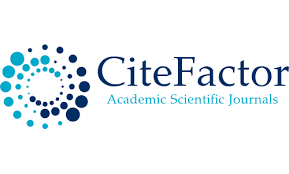Understanding of phraseology.
Keywords:
Phraseological combinations, phraseologisms, phrase, linguisticsAbstract
Phraseologism, phraseological unit, phraseme - a common name for stable (stable) connections consisting of two or more words, which are semantically related to each other or equivalent to a sentence, which are used in a figurative sense as a whole and are not divided. Phraseologisms, unlike syntactic structures similar to them in form, do not arise by free choice and replacement of words in speech, but are used as pre-prepared material with a meaning and specific lexicogrammatical content, that is, it is impossible to exclude or leave out any part of the structure of Phraseologisms: the seed of an ango, barley to beat raw, to count dumplings as raw, to leave without fitting in the skin, to fly away, to fall in the place of the day, with an open hand, with a heavy ear, and other Phraseologisms have norms and methods of historical use, and their meanings are clarified in a certain speech process.
References
Hojiyev A. Tilshunoslik terminlarining izohli lug‘ati. – T.: O‘zbekiston milliy ensiklopediyasi davlat ilmiy nashriyoti, 1985
Qosimova M. Badiiy nutq individualligini lingvistik xususiyatlari (Tog‘ay Muroq asarlari asosida): fil.fan nomz. Diss.. Toshkent 2007.
Rahmatullayev Sh. O‘zbek tilining izohli frazeologik lug‘ati. – Tоshkent ‘qituvchi. 1978.
Yoʻldoshev B. Frazeologik uslubiyat asoslari. – Samarqand, 1998.
Yo'ldoshev B. Frazeologik uslubiyat asoslari. - Samarqand.1999-yil
Downloads
Published
Issue
Section
License

This work is licensed under a Creative Commons Attribution 4.0 International License.
User Rights
Under the Creative Commons Attribution-NonCommercial 4.0 International (CC-BY-NC), the author (s) and users are free to share (copy, distribute and transmit the contribution).
Rights of Authors
Authors retain the following rights:
1. Copyright and other proprietary rights relating to the article, such as patent rights,
2. the right to use the substance of the article in future works, including lectures and books,
3. the right to reproduce the article for own purposes, provided the copies are not offered for sale,
4. the right to self-archive the article.












